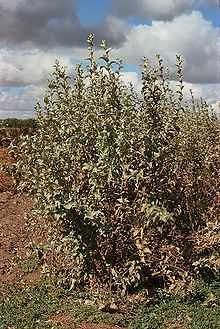Elaeagnus commutata
| Elaeagnus commutata | |
|---|---|
 | |
| Scientific classification | |
| Kingdom: | Plantae |
| (unranked): | Angiosperms |
| (unranked): | Eudicots |
| (unranked): | Rosids |
| Order: | Rosales |
| Family: | Elaeagnaceae |
| Genus: | Elaeagnus |
| Species: | E. commutata |
| Binomial name | |
| Elaeagnus commutata L. | |
Elaeagnus commutata (American silverberry or Wolf-willow), is a species of Elaeagnus native to western and boreal North America, from southern Alaska through British Columbia east to Quebec, south to Utah, and across the upper Midwestern United States to South Dakota and western Minnesota.[1][2] It typically grows on dry to moist sandy and gravel soils in steppes, meadows or woodland edges.[3]
These plants are shrubs or small trees growing to 1–4 m tall. The leaves are broad lanceolate, 2–7 cm long, silvery on both sides with dense small white scales. The fragrant flowers are yellow, with a four-lobed corolla 6–14 mm long. The fruits are ovoid drupes 9–12 mm long, also covered in silvery scales. The fruit pulp is floury in texture, and surrounds the single seed.[3]
The species is cultivated as an ornamental plant for its silvery foliage.
References
- ↑ Germplasm Resources Information Network: Elaeagnus commutata
- ↑ http://www.bonap.org/BONAPmaps2010/Elaeagnus.html
- ↑ 3.0 3.1 Plants of British Columbia: Elaeagnus commutata
-

Foliage
-

Fruit
-
Foliage
See also
- Psychedelic plants
External links
| External identifiers for Elaeagnus commutata | |
|---|---|
| Encyclopedia of Life | 582726 |
| ITIS | 27771 |
| Also found in: Wikispecies | |